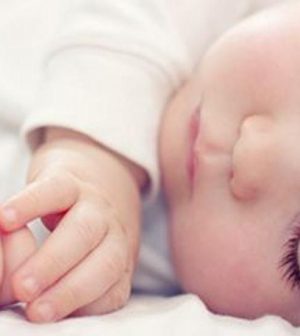- Navigating Your Midlife Crisis: Embracing New Possibilities
- City Raccoons Showing Signs of Domestication
- Mapping the Exposome: Science Broadens Focus to Environmental Disease Triggers
- One Week Less on Social Media Linked to Better Mental Health
- Your Brain Changes in Stages as You Age, Study Finds
- Some Suicide Victims Show No Typical Warning Signs, Study Finds
- ByHeart Formula Faces Lawsuits After Babies Sickened With Botulism
- Switch to Vegan Diet Could Cut Your Greenhouse Gas Emissions in Half
- Regular Bedtime Does Wonders for Blood Pressure
- Dining Alone Could Mean Worse Nutrition for Seniors
RSV Respiratory Illnesses Rising for Babies, Experts Warn

While the resurgence of COVID-19 cases in the United States has been dominating the news, an old viral enemy has been making a quieter comeback.
In late spring, U.S. pediatric hospitals began reporting an unexpected rise in serious infections caused by respiratory syncytial virus (RSV).
Unlike COVID-19, RSV is a long-established foe that normally emerges in late fall, peaks in the winter, and nearly disappears by summer.
In most people, RSV causes nothing more than cold-like misery, such as a runny nose and cough. But it can trigger serious lung infections in babies, especially preemies, and young children with certain medical conditions.
RSV is the most common cause of pneumonia in babies younger than 1, according to the U.S. Centers for Disease Control and Prevention. It’s also behind most cases of bronchiolitis, where the small airways of the lungs become inflamed.
When RSV gets deep into the lungs, youngsters can struggle to breathe and may need to be hospitalized to receive oxygen and fluids.
In June, the CDC warned that pediatric hospitals in the South were seeing an unusual rise in children sickened with RSV.
Now, the pattern is showing up in other parts of the United States.
At Salt Lake City’s Primary Children’s Hospital, there has been an uptick in positive tests for RSV in the past few weeks, according to Dr. Per Gesteland, who is based at the Utah hospital.
During a recent hospital media briefing about RSV, he said that the hospital’s current RSV numbers are similar to where they would normally be in early January.
“We’re watching this very closely because we’re concerned those trends are going to really start to pick up, and we’re going to start to see a lot more disease,” Gesteland said.
One reason for the concern, he said, is that the unseasonal RSV spike is happening in tandem with a rise in pediatric COVID-19 cases, due to the more contagious Delta variant.
At some other hospitals, experts have warned that the combined trends are stretching resources thin. Last week, Texas Children’s Hospital in Houston said it will now require its whole workforce to be vaccinated against COVID-19. It said that “bold action” was needed in the face of the dual surges in COVID and RSV.
The hospital has also reportedly seen over two dozen children infected with both COVID-19 and RSV.
However, it’s generally different groups of kids who are at risk from the two viruses, said Dr. Larry Kociolek, of Lurie Children’s Hospital and Northwestern University, in Chicago.
RSV is ubiquitous, he explained, and for older kids whose immune systems have been exposed to it, it’s simply a cause of colds. So the virus is mainly a threat to babies — especially preemies and infants younger than 6 months.
According to the CDC, over 2 million American children visit the doctor for an RSV infection during a normal year. About 58,000 end up in the hospital.
There is no vaccine against RSV. But, Kociolek said, there is a way to help prevent severe infections in certain high-risk youngsters: an injection medication called palivizumab.
The American Academy of Pediatrics (AAP) recommends the drug be given to some preemies in the first year of life, and to toddlers with conditions that severely dampen the immune system. The injections are given monthly, for up to five months, typically starting in November.
But last week, the AAP advised pediatricians to consider starting palivizumab now.
“With the level of RSV activity we’re seeing now, we’re trying to roll that out in summer,” Gesteland said.
What’s going on? It’s fairly simple, according to Kociolek and Gesteland: At the start of the pandemic, with widespread social distancing and mask-wearing, RSV cases all but vanished, and remained low during the normal 2020-2021 season.
Then as restrictions loosened and large gatherings became the norm again, people came into contact with pathogens, including RSV, that have been lying in wait, Gesteland said.
Besides medication for high-risk babies, Kociolek said parents can also help shield infants from RSV by limiting their exposure to large gatherings or people with cold symptoms.
Early symptoms of RSV — fever, cough and congestion — can look a lot like other respiratory ills, including COVID-19. Generally, Gesteland said, testing is the only way to know for sure which virus is the culprit.
According to the AAP, almost all youngsters recover from RSV on their own. But if a baby is wheezing or showing other signs of labored breathing, parents should call their pediatrician, Kociolek said.
More information
The U.S. Centers for Disease Control and Prevention has more on respiratory syncytial virus.
SOURCES: Per Gesteland, MD, hospitalist, University of Utah Health/Primary Children’s Hospital, Salt Lake City; Larry Kociolek, MD, assistant professor, pediatrics, Northwestern University Feinberg School of Medicine and Lurie Children’s Hospital of Chicago
Source: HealthDay
Copyright © 2025 HealthDay. All rights reserved.










